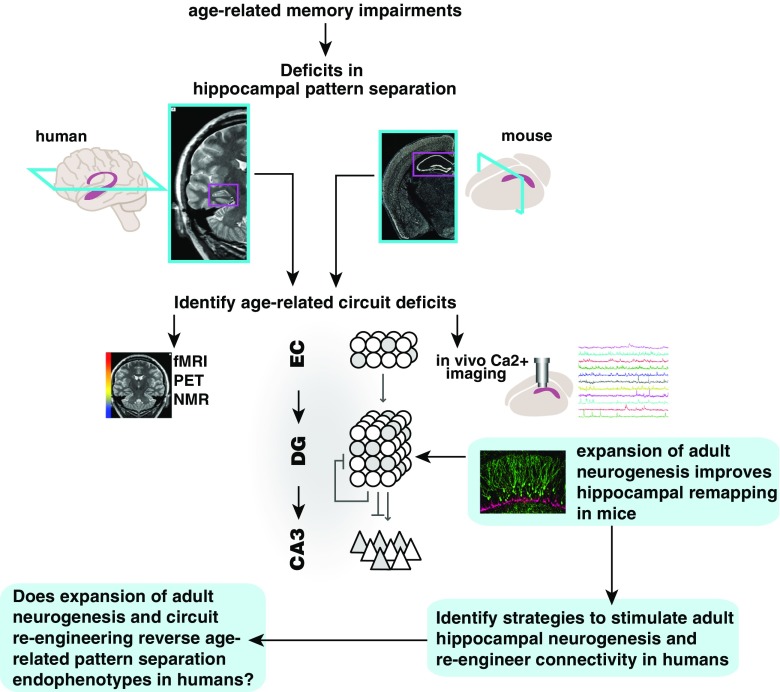Fig. 3.
Schema for how rodent studies edify novel therapeutic neurogenesis-based strategies to optimize dentate gyrus (DG)–CA3 circuit functions and improve memory in aged humans. Deficits in pattern separation/completion balance in DG–CA3 are observed/inferred in both rodents and humans, albeit at different levels of imaging resolution. Rodent studies permit elucidation of circuit-based mechanisms by which neurogenesis modulates DG–CA3 functions. Identification of circuit-based mechanisms facilitates development of strategies that target these mechanisms to promote DG–CA3 functions. Development of novel imaging approaches to visualize adult hippocampal neurogenesis or capture pattern separation at higher resolution will permit evaluation of efficacy of new therapeutic strategies. fMRI = functional magnetic resonance imaging; PET = positron emission tomography; NMR = nuclear magnetic resonance; EC = entorhinal cortex

